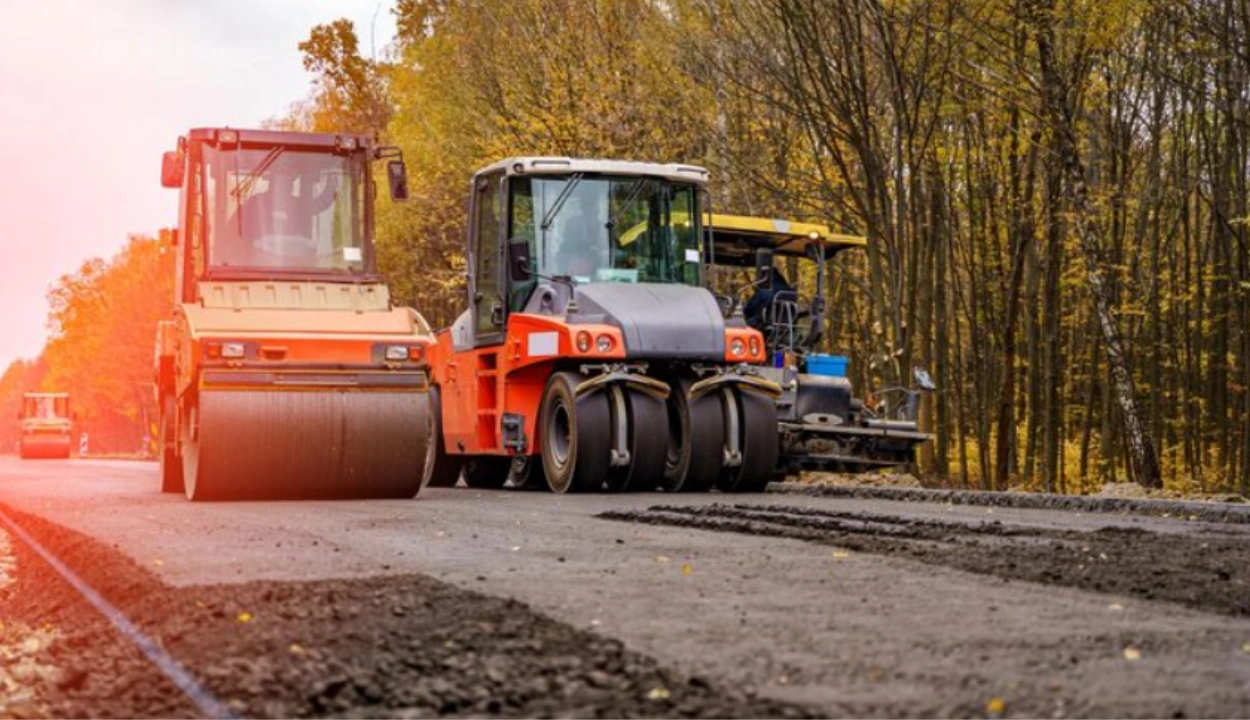What are the Environmental Impacts of Optimized Construction Equipment Management
Understanding construction's impact on the environment is important. According to some studies, construction is responsible for up to 50% of climate change.
From reducing carbon footprints to saving natural habitats, sustainable practices are vital.
These explanations highlight the importance of wise construction equipment management. It's a major area where the construction industry can make significant strides.
Using resources efficiently, cutting harmful emissions, and adopting eco-friendly technology, businesses can shrink the ecological footprint of construction projects.

Reducing Carbon Emissions
In the construction industry, sustainability is becoming a major concern due to the rise in carbon emissions.
The amount of CO2 released from building operations is higher than ever, at about 10 billion tons.
This is about 5% more than in 2020 and 2% more than the last highest level in 2019.
Improved construction equipment management is transforming organizations towards greener practices.
The focus is on making machines use less fuel and adopting energy-saving technologies, which benefits both the environment and company finances.
Fuel efficiency is key to addressing the high fuel use of traditional equipment. Innovations in engine design, hydraulics, and operations reduce carbon footprints.
Modern machines with automatic engine shut-off and efficient fuel-burning save money and help the environment.
Sustainable Equipment Management Practices
Telematics and Fleet Management
The use of telematics in construction equipment has greatly improved sustainability efforts by allowing for remote monitoring and management of machinery.
Telematics systems collect and analyze data on fuel use, idle times, and maintenance needs and provide valuable insights to improve sustainability.
These systems monitor fuel consumption and help companies find and fix inefficiencies, resulting in a reduction of emissions and costs.
They also identify when equipment is idling excessively, so managers can take steps to minimize it and save fuel while cutting environmental impact.
Implementing a Waste Management Plan
A good waste management plan is important for reducing the environmental impact of construction work.
This plan should include steps for properly handling, disposing of, and recycling waste materials.
Effective waste management starts with sorting different types of waste on-site, which makes recycling easier and ensures hazardous materials are safely disposed of.
Construction sites can set up recycling programs for common materials like metals, plastics, and cardboard, and can work with local recycling centers to divert a lot of waste from landfills.
Also, teaching workers about the importance of waste management and how to properly dispose of waste helps ensure everyone is committed to sustainability.
The use of advanced construction equipment management software can assist in implementing waste management plans by using AI, ML, and GPS technologies to track waste generation and disposal in real-time.
It ensures waste is sorted correctly and hazardous materials are handled safely.
Implementing a Construction Environmental Management Plan (CEMP)
A Construction Environmental Management Plan (CEMP) is a strategic document that outlines how to reduce the environmental impact of construction projects.
It acts as a complete guide for eco-friendly construction practices.
The CEMP includes plans for managing waste by reducing, reusing, and recycling materials, with specific goals for cutting waste and clear instructions for its disposal.
It encourages resource conservation by using energy, water, and materials efficiently and promotes the use of sustainable materials, renewable energy sources, and water-saving technologies to lower the environmental impact of construction projects.
Minimizing Pollution
Air Pollution
Industrial operations release harmful pollutants such as nitrogen oxides (NOx), sulfur dioxide (SO2), and particulate matter (PM).
Construction sites cause 14.5% of the particulate matter in the air and 8% of all emissions. Sustainable practices focus on cleaner fuels, advanced technology, and maintenance to reduce emissions, which in turn improves air quality.
Noise Pollution
Machinery noise disrupts communities and wildlife. Sustainable management uses soundproofing, mufflers, and quieter machinery to mitigate disturbances and promote peaceful environments.
Water Pollution
Industrial activities discharge chemicals, metals, and sediments, which threaten water bodies.
Sustainable practices include containment, treatment, erosion control, and eco-friendly cleaning to protect aquatic ecosystems.
Dust Pollution
Construction, mining, and manufacturing generate dust, which can endanger health and ecosystems.
Sustainable management uses suppression systems, covering materials, and site management techniques to reduce emissions and protect communities.
Resource Conservation
Resource conservation in construction means using less and wasting less. Recycling and reusing materials are important parts of this.
Instead of throwing away old buildings when they're torn down, we can save materials such as concrete and steel to use in new ones.
This helps us protect the environment and use fewer new resources.
Saving water is another way to conserve resources. By collecting rainwater and using it for things like watering plants, we can use less clean water.
We can also recycle "greywater" from sinks and showers for gardening, instead of letting it go to waste.
In gardening, using smart watering techniques like drip irrigation helps plants grow while using less water. This saves water and keeps our gardens healthy.
Using construction equipment management software ensures that machinery operates efficiently and reduces energy consumption, also contributing to overall resource conservation efforts.
Innovative Technologies and Their Impact
Hybrid Construction Equipment
Utilizing hybrid technology in construction equipment is significant for reducing carbon emissions and enhancing adaptability, particularly considering the adverse environmental effects of construction.
Consider hybrid excavators, for instance. They can seamlessly transition between electric and conventional power depending on the task.
Thus, they can operate quietly and without pollution in sensitive areas.
However, when additional power is required, they can switch to conventional mode.
This not only renders them eco-friendly but also versatile for various construction tasks.
If more companies adopt hybrids like these, it could revolutionize construction practices, making them more environmentally friendly without compromising efficiency.
Mini Excavators
Mini excavators are gaining popularity because of their compact size and environmental friendliness.
They can maneuver into tight spaces and consume less fuel, resulting in fewer harmful emissions.
Some even run on electricity or a combination of electricity and fuel, further enhancing their eco-friendliness. They are ideal for urban projects where space is limited.
Choosing mini excavators demonstrates a commitment to sustainability while ensuring efficient completion of tasks.
Utilization of Renewable Energy
Incorporating solar panels and wind turbines into construction sites is an excellent strategy to reduce carbon emissions.
Utilizing clean energy from these sources to power construction machinery significantly benefits the environment.
Not only does it reduce reliance on fossil fuels, but it also sets a precedent for incorporating renewable energy into construction practices.
This sets a positive example for the future, facilitating wider adoption of green practices in the construction industry.
Adoption of Smart Construction Techniques
The integration of advanced construction equipment management software represents a significant shift in the construction sector.
These systems leverage data and automation to streamline construction processes, minimize waste, and boost productivity.
These intelligent techniques not only streamline construction operations but also optimize resource utilization and environmental protection efforts.
Hydrogen Fuel Cell Technology
Hydrogen fuel cell technology represents a novel engine type for construction machinery.
It offers emission-free power generation, thereby reducing environmental impact.
Instead of combustion, it generates electricity through the combination of hydrogen and oxygen.
This ensures clean and robust machine operation without concerns about pollution or breakdowns.
However, the current limitation lies in the scarcity of refueling stations and initial costs.
Nevertheless, experts are actively addressing these challenges, making hydrogen a promising option for environmentally friendly construction machinery.
Conclusion
Construction activities exert a significant environmental impact, but each challenge can be mitigated.
Clue is the software which stand out in optimizing construction equipment management is crucial for minimizing adverse effects.
Embracing sustainable practices aids in reducing emissions and conserving resources.
Furthermore, innovative technologies like hybrid and mini excavators contribute to environmentally friendly construction practices.
By embracing these green methods, the construction industry can substantially reduce its carbon footprint, fostering a healthier environment and long-term sustainability.
FAQs
What are the main environmental impacts of construction?
Construction significantly contributes to climate change by generating substantial CO2 emissions and causing air, noise, water, and dust pollution, as well as extensive resource consumption.
How can improved construction equipment management reduce carbon emissions?
Enhanced equipment management focuses on fuel efficiency, energy-saving technologies, and innovations in engine design and operations. These practices mitigate the carbon footprint of construction projects by minimizing fuel consumption and reducing harmful emissions.
What role do telematics and fleet management play in sustainable construction?
Telematics systems in construction equipment enable remote monitoring of fuel usage, idle times, and maintenance requirements. By identifying inefficiencies and offering data-driven insights, telematics aids in emission reduction, cost reduction, and overall sustainability improvement.
What are some innovative technologies that promote eco-friendly construction?
Technologies such as hybrid construction equipment and mini excavators contribute to making construction more environmentally friendly by reducing emissions, conserving resources, and enhancing efficiency.
Transform Your Equipment Management












